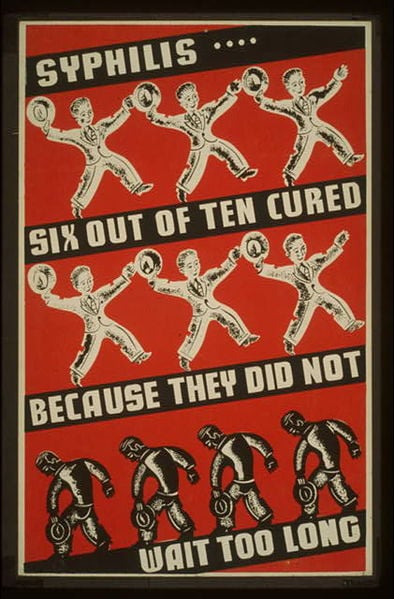1 min read
SCOPE: Powering the Future of Clinical Research
Meet Veristat at SCOPE: Powering the Future of Clinical Research February 2-5, 2026
🔬 Advancing Clinical Research with...
This post is continued from the post: The History of Clinical Research: 1930 - 1950
The Durham-Humphrey Amendment was co-sponsored by Carl Durham and Hubert H. Humphrey (who later became Vice President of the United States). This bill defines two types of medications: prescriptions (also called legend) and over-the-counter (OTC). Prior to this law, there was no requirement that any drug be sold only with a doctor's prescription. This bill defined prescription drugs as those drugs that are unsafe for self-medication.
James Watson and Francis Crick discovered the double helix structure of deoxyribose nucleic acid (DNA). They published their discovery in the scientific journal Nature in an article titled "Molecular Structure of Nucleic Acids: A Structure for Deoxyribose Nucleic Acid" on April 25th, 1953. This discovery had a major impact on the fields of genetics and biology, and later led to an understanding of the genetic code. Like most scientific breakthroughs, the discovery of DNA is surrounded by controversy. Watson and Crick's integrity has often been questioned because they used material from the unpublished works of several other researchers at King's College to inspire their findings.
Margaret Sanger opened the first birth-control clinic in America in 1916. Biochemist Gregory Pincus and and gynecologist John Rock developed a birth-control pill. Clinical trials for the pill began in 1954 and involved using synthetic progesterone and estrogen to suppress ovulation females. The pill was approved by the FDA on May 9th, 1960.
In 1975, singer-songwiter Loretta Lynn recorded a controversial song titled "The Pill", which many radio stations banned from the air.
[youtube https://www.youtube.com/watch?v=5DcdONaKSQM]
Thalidomide was developed by a German pharmaceutical company and was known as a wonder drug that could treat insomnia, anxiety, gastritis, coughs, colds, headaches, and morning sickness. Clinical trials on thalidomide began in November of 1956. The drug began being marketed to the public as an OTC drug under the name Grippex in November of 1956. It was also marketed in the United Kingdom under the name Distava. It had only been tested on rodents and was not tested for teratogenic (physiological abnormality) effects. After its release to market, thousands of children were born with malformation of the limbs (phocomelia). Additonal defects included blindness, deafness, and deformed eyes and hearts. There were 10,000 cases of phocomelia due to thalidomide worldwide. Only 5,000 of those children survived. The United States had only 17 cases. Thalidomide was taken off the market as on OTC drug in November of 1961. However, it is still used today as a cancer drug.
 These artificial limbs were made for an affected child in the 1960's by the Department of Health and Social Security's Limb Fitting Centre in Roehampton, London. Image courtesy of Science Museum London at http://bit.ly/1FVkgYT
These artificial limbs were made for an affected child in the 1960's by the Department of Health and Social Security's Limb Fitting Centre in Roehampton, London. Image courtesy of Science Museum London at http://bit.ly/1FVkgYT
The Kefauver-Harris Amendment to the Federal Food, Drug, and Cosmetic Act was also called the Drug Efficacy Amendment and was a direct reaction to the thalidomide tragedy. It requires drug manufacturers to prove the safety and effectiveness of their drug prior to approval. It also requires accurate disclosure of drug side effects and prevents generic drugs from being marketed as breakthrough drugs under a different trade name.
[youtube https://www.youtube.com/watch?v=bJSKxUfK3cA]
The Declaration of Helsinki (DoH) combined the ten principals of the Nuremberg Code with the Declaration of Geneva (which listed the ethical duties of physicians) and specifically addressed clinical research practices and new, relaxed, guidelines for conditions of consent. The World Medical Association (WMA) adopted the first version of the DoH in 1964. It has been revised several times since then. The most current version can be found here.
The previous post in this series addressed the start of the Tuskegee Study of Untreated Syphilis in the Negro Male in 1932. In the late 1940's, penicillin became the standard treatment for syphilis. However, participants in the Tuskegee study were never given penicillin. In fact, the Center for Disease Control (CDC) recommended that the study continue in 1969, despite knowing that penicillin had been effectively treating syphilis patients for over a decade. Study participants were also not informed about the option of penicillin as a treatment, nor were they allowed access to nearby syphilis treatment programs. The program finally ended in 1972, after whistleblower Peter Buxtun leaked information to the press. As a result of the study, 128 men died, 40 of their wives contracted the disease, and 19 children were born with congenital syphilis.
 Depression-era U.S. poster advocating early syphilis treatment. Although treatments were available, participants in the study did not receive them.
Depression-era U.S. poster advocating early syphilis treatment. Although treatments were available, participants in the study did not receive them.
As a response to the inadequate oversight of human research in the Tuskegee syphilis study, it was recommended that public regulations be defined and put into place to protect future human research participants. This led to the National Research Act of 1974. In the same year, Congress also created the National Commission for the Protection of Human Subjects in Biomedical and Behavioral Research to identify guidelines regarding when human research subjects should be used and how they should be treated and to create guidelines to ensure those new principals were followed. These guidelines and principals were published by the National Commission in 1979 as the Belmont Report. The three basic principals outlined in the Belmont Report can be summarized as:
1 min read
Nov 20, 2025 Veristat Events
🔬 Advancing Clinical Research with...
1 min read
Oct 22, 2025 Veristat Events
Veristat is excited to attend the ASH Annual Meeting and...